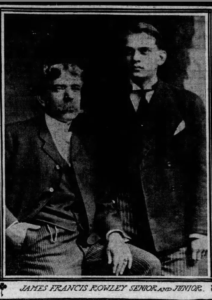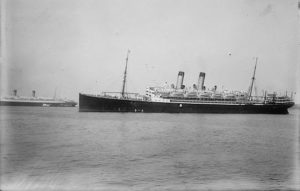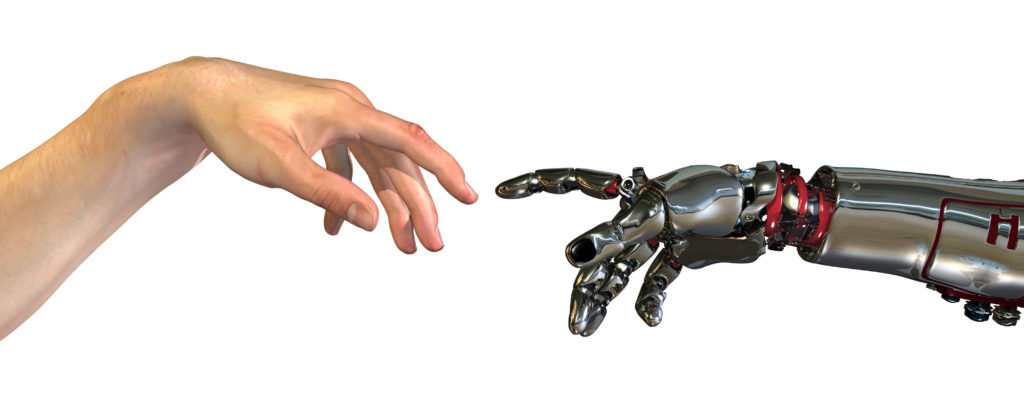JF Rowley’s Legs
Being a lifelong student of business, I am always interested in discovering everything I can about the history of companies for whom my ancestors worked. I want to know; how did they get started? What products or services did they provide, and what work did my ancestors do for them? Most importantly, what became of them? As I work through the research necessary to answer these questions, I feel I am one step closer to understanding the lives of relatives who came before me.
Recently I found myself looking closely at the JF Rowley company. My wife’s grandfather, Henry William Tresch, was the assistant general manager of the company during the early 1900’s. Founded by James Francis Rowley in 1877, the company is still in operation today, and works to create custom orthotics and prosthetics. They currently operate out of Cincinnati, Ohio. Here is a link to their homepage! More on this later.
James Francis Rowley was born in 1859, in Dubuque, Iowa. A descendant of Henry Rowley of the Plymouth Colony, he was born on the family farm. With 50% of the population in the 1870’s directly tied to agriculture, he had no illusions about growing up in the industry and farming the land himself.
He was, however, a tinkerer at heart. He developed a passion for creating artificial limbs, and it soon surpassed the instincts of his upbringing. He started JF Rowley in Iowa, but decided to move operations in 1904 to Chicago, the city where Henry William Tresch was born and raised.
 Figure 1 (Left):
Figure 1 (Left):
James Francis Rowley Sr. (left), and his son, James Francis Rowley Jr. (right).
Not long after the Rowley’s arrived in Chicago, James sadly lost his only son, James Francis Rowley Jr. During practice for a high school football game, Rowley Jr. was knocked down and kicked in the stomach. After the scrimmage he was deemed fit to go back to school. Later, symptoms of septic peritonitis developed, and he unfortunately died on November 7, 1904.
“The boy who kicked me was my friend. If he knew how he caused me to suffer he might go insane with grief. It will do no good for anyone to know. I am dying; that settles it. This is my last scrimmage and the goal is now in sight. It would not be loyal for me to tell.”
– James Francis Rowley Jr., 1904.
During 1904, 13 players across the nation died as a direct result of their injuries on the football field. This was not unheard of; in fact, it was the same number as the previous year. Serious injuries, however, totaled 296. This was the highest annual total since the original introduction of the sport to modern Colleges. For many months following his son’s death, James Sr. lobbied for the enactment of state legislation to ban football in Illinois, Indiana, Michigan, and Wisconsin. He was unsuccessful.
A decade later, World War I began. James Rowley and Henry Tresch both applied for passports in early 1915, and travelled to Great Britain and France, where they won several contracts to produce artificial limbs for the Allies.
Shortly thereafter, Henry moved back to the United States to manage the Chicago plant, which was producing 500 legs per month to ship overseas. Later that year, James was also bound for the United States to rejoin his home country. On August 19 the ship he travelled on, the SS Arabic, was hit with a single torpedo by the German submarine SM U-24. Tragically, it sunk. While James himself survived, 44 passengers and 3 crew members lost their lives.
 Figure 2:
Figure 2:
The SS Arabic, as seen in 1908.
When asked about his employer’s whereabouts during the sinking of the SS Arabic, Henry Tresch divulged that he was largely unaware of James’s movements.
“We had no definite idea as to when Mr. Rowley would sail, but from recent letters we gathered he intended to sail on the Arabic. We did not know exactly where he was at the time. His business with the governments of the allies was of a nature that he did not want his movements known.”
– Henry Tresch, 1915.
It would be almost two years later, on April 6, 1917, that the United States would join it allies in World War I. James would spend much of the War establishing and running facilities in England and Scotland to support the soldiers there, and continued to do so well after its official end. For his efforts he received the only gold medal ever issued by the British government to an individual for ‘superiority in the manufacture of artificial limbs’.  Figure 3 (Left):
Figure 3 (Left):
The JF Rowley company logo as it is today.
From 1915 to 1925, the JF Rowley company fitted 46,000 war-crippled men with artificial limbs. James Francis Rowley finally retired from the company in 1933. He turned over stewardship of the company to his son-in-law, Blaine Korrady, who successfully ran the company until it was sold in 1959.
James passed away on December 31, 1938 in Chicago, Illinois. He was a vital contributor to the advancement of prosthetic science with over 50 patents to his name, and left behind a rich history that I feel proud to be somewhat connected to.
Although the headquarters are now in Cincinnati, Ohio, the JF Rowley company still exists and is still in the same business- after 141 years! To put this feat into perspective, most recent data suggests there are 5.9 million companies with more than one employee in the United States, but estimates are that only about 1,000 are over 100 years old. Thanks to the ever-changing nature of technology in our age, the average age of a company in the Standard & Poor’s 500 index is only 20 years.
When James Rowley started his company, Sitting Bull was moving his people to Canada, Thomas Edison had just announced his invention of the phonograph, and the Molly Maguires had just been convicted of murder and more in the Pennsylvania coal region. The company has survived several wars, economic depression, globalization, mass advances in technology, and immeasurable change to legal, social, and cultural norms.
An incredible accomplishment, indeed.

About the Blog
This website was established to assist in the research the Sawn family name as well as the many surnames associated with it. It was set up to assist in the research of these families and contains related documents and photos collected over the year. The blog represents the stories and histories uncovered about our ancestors during this research.
Recent Comments
- Sabine J on The Sauer Family and Murphy’s Law
- Daniel Sawn on The Name’s the Same
- Cleo Sawn on Where are all the Sawns?
- Cleo Sawn on Who is in my family tree?
Categories
- Cultural and Regional Studies (3)
- Economic and Business History (1)
- Genealogy and Ancestry (7)
- Heritage and Legacy (1)
- Historical Context and Events (3)
- Historical Figures and Impact (2)
- Historical Records and Research (1)
- Military and War History (4)
- Monuments and Memorials (1)
- Personal Histories and Narratives (6)
- Research Techniques and Analysis (1)
- Tragedies and Accidents (3)
